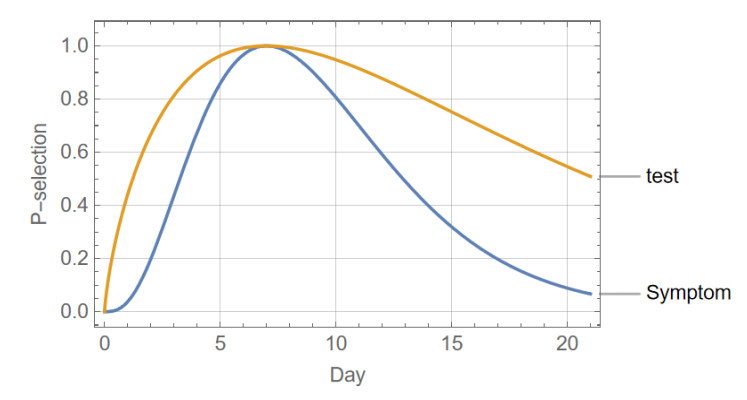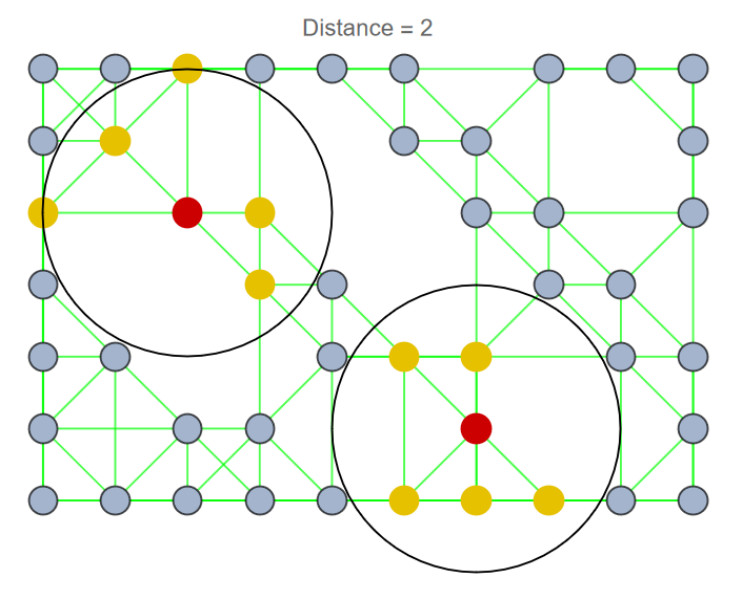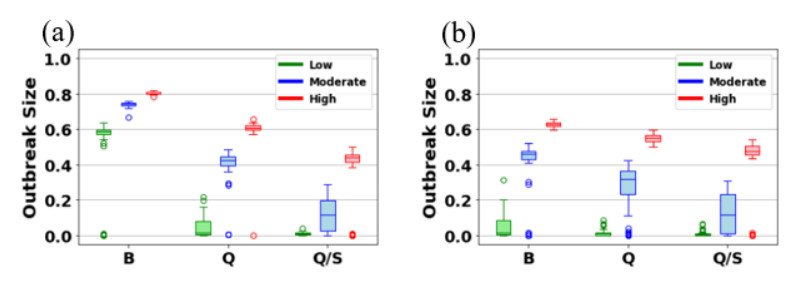1.
Introduction
Cassia auriculata is an important Ayueveda and Sidha medicinal plant with important ethno-medicinal applications, many of which are related to metabolic syndrome and diabetes. Recently, we have reported the detailed polyphenolic [1] and metabolomic [2] composition in C. auriculata plant parts. We aim to review the phytochemical composition of the various plant parts of C. auriculata, and to analyze the antidiabetic-related therapeutic potential of the reported phytochemical compounds. Through a detailed compound-oriented analysis, a deeper perception of the multi-level antidiabetic activity of C. auriculata can be achieved. Other recent publications also support the application of a non-in-vivo approach in evaluating the bioactivities of C. auriculata [3,4].
For this review, metabolic syndrome-related bioactivities included antidiabetic, antihyperglycemic, antihyperlipidemic, antioxidant, and anti-inflammatory activities, in addition to hepato-, nephro-, and neuro-protective potential, and immunomodulatory effects. To focus on these aspects, other C. auriculata activities, including skin- and bone-related, antimicrobial, antiviral, antitumor, anti-arthritic, and others were excluded from the scope of this work.
2.
Materials and methods
For the compilation of this review, we searched Google Scholar using the following search terms: C. auriculata, Cassia auriculata, antidiabetic, antioxidant, anti-inflammatory, antihyperlipidemic, hypolipidemic, antihyperglycemic, hypoglycaemic, traditional, ethnobotanical, medicinal herb, phytochemicals, phytochemical composition, flower, bud, leaf, root, hepatoprotective, nephroprotective, neuroprotective, and immunomodulatory.
We did not limit publication dates, impact factors, or methods. However, we refrained from citing reviews about the plant and intended to bring solid evidence-based data from experimental works.
3.
Results and discussion
3.1. Traditional and reported medicinal properties
Cassia auriculata, a Caesalpiniaceae shrub, is native to India and Sri Lanka, distributed in Indo-Malaysia, and cultivated in Myanmar [5]. In Ayurvedic medicine, C. auriculata is considered a significant medicinal herb [6], whose uses include antidiabetic, anti-rheumatic, and laxative uses, in addition to applications in skin diseases, bone fracture, spermatorrhea, and urinary tract infection [7]. In traditional medicine, various plant parts that are used include flowers, flower buds, roots, leaves, seeds, and bark, with specific indications for each [7,8,9]. Flowers are used for skin disorders and rheumatism, while bark and leaves as astringent and anthelmintic, and other parts (powered leaves and aerial parts) are used for ophthalmia, conjunctivitis, and diabetes [10]. Preparation may vary according to the plant part and specific application or condition, e.g., flowers are crushed and taken orally to treat venereal diseases; powder of bark is used for fixing teeth; decoction is prepared for chronic dysentery, and infusion or decoction the main mode of preparation of antidiabetic remedies [7,11]. An antidiabetic herbal tea is prepared from roots, leaves, flowers, bark, and unripe fruits of C. auriculata, known as Kalpa herbal tea (avarai panchaga choornam) [12,13]. In the Sri Lankan Siddha medicine, C. auriculata is the most frequently used species, present in many preparations, with different plant parts that include unripe and ripe fruits and tender leaves [11,14].
For various plant parts, specific traditional bioactivities have been reported, many of which have also been demonstrated by current scientific research. Leaves exhibited hepatoprotective [15,16], antioxidant [17,18], anti-inflammatory [19], anti-arthritic [20,21], antihyperglycemic, and hypolipidemic activities [22,23]. Flowers and buds exhibited antidiabetic [12,13,24,25,26], antihyperglycemic [23,26,27,28] antihyperlipidemic [29,30,31,32], antioxidant [33,34,35,36], and immunomodulatory activities [37]. Aerial parts were also reported to possess health-promoting properties, such as antioxidant [38], antihyperlipidemic [39,40], and anti-inflammatory activities [3]. Roots have been reported for their nephro and hepatoprotective activities [41,42], and antioxidant [43] and antidiabetic properties [44]. The variability in indications between the various parts implies the possibility of different phytochemical compositions for different C. auriculata parts, which has indeed been implied [8]. The presence of antioxidant, antidiabetic, antihyperglycemic, and antihyperlipidemic (hypolipidemic) activities across various parts of C. auriculata confirms the traditional use of the various plant parts in the treatment of diabetes.
3.2. Reported phytochemical composition
3.2.1. Leaves
In the leaves, polysaccharides, flavonoids, anthracene derivatives, and dimeric procyanidins were reported [33,45], as well as keto-alcohols [46]. Later, a benzocoumarin glycoside, avaraoside I, was reported, in addition to various flavonoids (kaempferol, luteolin, quercetin, myricetin, rutin, catechin, gallocatechin, epicatechin, epigallocatechin, and their glycosides) [16]. These compounds were also reported in aerial parts of C. auriculata [39,40]. Carotenoids, including beta-carotene (vitamin A precursor) and lutein (0.38 and 0.32 gr/kg DW), were also reported in the leaves, as well as low levels (1.3 g/kg DW) of ascorbic acid (vitamin C) [18]. A photochemical screening indicated flavonoids, steroids, saponins, and tannins were present in the leaves [19,47]. Further analysis of the leaves showed the presence of tocopherols (vitamin E) and terpenes [6], as well as phytosterols [45,46], fatty alcohols [6,45], tannins, polyphenols, and carotenoids [48]. Other unique compounds in the leaves include emodin, an anthraquinone glycoside [16], and resorcinol [6]. Gas chromatography-mass spectrometry (GC-MS) analysis of the leaves revealed the presence of 29 compounds, of which 3-O-methyl-D-glucose, α-Tocopherol-β-D-mannoside, resorcinol, n-hexadecanoic acid, (Z)-13-octadecenal, and 1, 2, 3, 4-tetrahydroisoquinoline-6-ol-1-carboxylic acid comprised the major constituents [6]. The abovementioned bioactive compounds and vitamins A, C, and E of C. auriculata possess a strong antioxidant activity, which scavenges free radicals. This antioxidant activity prevents oxidative stress, thereby lowering risks of atherosclerosis (plaque in arteries) or hypolipidemic hyperglycemia (high blood sugar), hypertension (high blood pressure), obesity, types Ⅰ and Ⅱ diabetes, and coronary diseases [49,50,51,52].
3.2.2. Flowers and flower buds
In the buds and flowers, quercetin, spermidine, N8 Acetyl spermidine, cyaniding, hesperidin, and vitexin were tentatively identified [13], in addition to tannins [33]. A detailed liquid chromatography-mass spectrometry (LC-MS) analysis of the flowers showed the presence of phenolic acids (gallic, caffeic, and ferulic), theanine, theacrine, theobromine theophylline, and caffeine, as well as quercetin and quercetin hexoside, and catechins (catechin, epigallocatechin, catechin gallate, and epicatechin gallate) [53]. In a GC-MS analysis of the flowers, fatty acids and their esters were observed (dodecanoic, hexadecanoic, 8-octadecanoic, 9-octadecanoic), along with alkenes [54]. Phytochemical screening of the flower indicated the presence of flavonoids, steroids, saponins, phenolic compounds, terpenoids, alkaloids, and tannins [55]. Interestingly, the flowers also contain anti-nutrients, including oxalates, phytates, and tannins [56]. Flower and flower bud compounds such as tannins, phenolic acids, flavonoids, saponins, alkaloids, and catechins also possess antioxidants that can prevent or treat diabetes, as already shown above.
3.2.3. Other plant parts
In the roots, a phytochemical screening revealed the presence of alkaloids, tannins, flavonoids, glycosides, and steroids [41,42], as well as saponins [41], and a recent work also described the phenolic profile in C. auriculata seeds [44]. In addition, anthraquinones and their glycosides were reported [4,57], as well as flavonoids [4,58], and diterpene glycosides [58]. A GC-MS analysis of the seeds showed the presence of mainly fatty acids, in addition to some phenolic compounds, α-tocopherol, and a phytosterol [59]. In addition to leaves and seeds, anthraquinones and their glycoside were reported in heartwood and pod husks [60].
Screening of aerial parts revealed the presence of steroids, tri terpenoids, tannins, flavonoids, alkaloids, saponins, glycosides, gums and mucilage, and phenolic compounds [38], while tannins were also reported in the bark [61]. All these compounds possess potent antioxidants suitable for the treatment and prevention of diabetes.
3.3. In-papyro antidiabetic potential
Diabetes requires blood glucose and lipid level management, in addition to blood pressure maintained within a recommended range, to minimize the risk of complications, such as cardiovascular or coronary disease, retinopathy, nephropathy, and neuropathy [62]. Thus, the antidiabetic effect involves a wide range of bioactivities, that impact through a wide range of mechanisms. Hence, it might include antioxidant and anti-inflammatory, hepato- and nephroprotective, vaso-, and cardiovascular protective, and neuroprotective bioactivities. In turn, this can be achieved through various mechanisms, e.g., antihyperglycemic (including postprandial glucose levels and alpha-glucosidase inhibitory activity), antihyperlipidemic, insulin resistance and tolerance, gut microbiota interaction, and anti-obesity effects.
The phytocomposition of C. auriculata supports many of these antidiabetic-related bioactivities, based on the available data regarding molecular mechanisms of specific compounds. Furthermore, it is important to mention that further clinical evaluations are required to fully understand the therapeutic potential of this herb in humans.
3.3.1. Acids
Amino acids- Various amino acids present in C. auriculata might be related to its health-related properties. Specifically, pyroglutamic acid (5-oxoproline) was reported to possess antidiabetic bioactivity in a rat model [63], while also present in lower levels in type 2 diabetic patients [64], compared to healthy subjects. This amino acid was also reported to have positive neural effects in improving age-associated memory impairment [65]. Other Amino acids. GABA and tryptophan, also possess neurological functions, acting as neurotransmitters [66,67]. In addition, certain amino acids affect immunity, including alanine, phenylalanine, valine, proline, and tryptophan [68]. Tryptophan is also an antioxidant [69], while norvaline is anti-inflammatory [70].
Carboxylic acids- The reported beta-glucuronidase inhibitory activity of citric, malic and succinic acid might be closely related to the leaf hepatoprotective effect [71].
Sugar acids- certain sugar acids have reported effects correlating with observed bioactivities of C. auriculata. While this might not be well-established evidence in clinical use, it might shed light on our understanding of this herb's diverse mechanisms in treating diabetes. Galacturonic acid has an intestinal protective effect in colitis [72] and antihyperlipidemic effects [73], and glucuronic acid has beneficial hepatic effects [74]. Gluconic acid has desirable gut microbiota effects [75], while threonic acid has shown some positive neural effects [76].
3.3.2. Sugars
Monosaccharides- monosaccharides were found to be a significant group of compounds in C. auriculata, with respect to both the number of compounds, as well as their total levels [2]. Many compounds of this group have been reported to have several metabolic syndrome-related bioactivities, which have also been suggested to work synergistically [77]. Rhamnose is hypolipidemic [78], and such is sorbose [79], in addition to its anti-hyperglycemic properties [80,81]. L-arabinose suppresses glycemic response [82], possibly through gut microbiota modulation [83]. Tagatose is another monosaccharide with antidiabetic and prebiotic effects, in addition to its antioxidant, anti-aging, and obesity control roles [84]. Allose is also an antioxidant, with further anti-inflammatory and neuroprotective effects [85], which were also reported for galactose [86]. These data emphasize the central role of Monosaccharides as active compounds of C. auriculata, delivering some of the hypoglycemic and hypolipidemic activities.
Disaccharides- among disaccharides, trehalose and turanose were reported to carry health-related bioactivities: Turanose is hypolipidemic [87] and anti-inflammatory [88,89], while trehalose is an antioxidant [90], with ocular and neural bio-protection properties [91].
Nucleosides- D-ribose contributes to cardiovascular health [92], possibly through its role in oxidative stress recovery [93].
3.3.3. Sugar alcohols
Sugar alcohols were the most abundant group of compounds in C. auriculata, with many of these compounds possessing significant desirable health effects. Myo-inositol improves insulin sensitivity in metabolic syndrome [94,95], is hypoglycemic in diabetic patients [96], and is also beneficial for polycystic ovaries syndrome (PCOS) [97]. Xylitol presents various metabolic effects-antihyperglycemic, antihyperlipidemic and body weight control [98,99,100], in addition to prebiotic, immunomodulatory, antioxidant, and anti-inflammatory properties. Mannitol is a hydroxyl radical scavenger [101], whose antihypertensive effects might be related to both its diuretic and vasodilation activities, thus also beneficial for renal function [102]. Erythritol is another antioxidant hydroxyl radical scavenger [103], whose metabolic syndrome-related effects include endothelial protection in diabetic patients [104], as well as being antihyperglycemic [105] and antidiabetic [106].
Pinitol, the most abundant single compound in C. auriculata, is another highly bioactive polyol. Its reported effects include immunomodulation [107], and, in regard to diabetes, it was reported as antihyperglycemic [108,109,110], also improving insulin resistance [111], antihyperlipidemic [112,113], nephroprotective [114,115,116], neuroprotective, hepatoprotective [117], and anti-inflammatory [118]. Pinitol and glucosamine were reported to have a synergistic anti-inflammatory effect [119].
3.3.4. Lipophilic compounds
Fatty acids- the only fatty acid in C. auriculata with health-related properties is alpha-linolenic acid (C18:3), an ω-3 fatty acid, with metabolic, anti-inflammatory, and neurological effects [120,121]. However, due to its very low levels, its effects, in this case, are questionable.
Lipophilic antioxidants- the presence of α-tocopherols and phytosterols, both being lipophilic antioxidants, grants C. auriculata another aspect of antioxidant and anti-inflammatory activities [122], in addition to a hypocholesterolemic effect and lowering blood lipid levels [123].
3.3.5. Specialized metabolites
Polyphenols- the significant antidiabetic effects of polyphenols are well documented, being an abundant biologically active class of dietary antioxidants [124,125]. Both hydroxycinnamic and hydroxybenzoic acids possess antidiabetic effects, which have been reviewed [126]. For example, gallic acid, a hydroxybenzoic acid, is involved in insulin signaling, oxidative stress, and inflammation [127,128], in addition to its anti-obesity, and antioxidant effects [129]. Hydroxycinnamic acids play a role in the connection between human health and gut microbiota [130,131], and present positive effects on cardiovascular health, hypertension, metabolic syndrome, obesity, and diabetes, alongside neuroprotective effects [126]. Flavonoids, catechin, and epigallocatechin (actually flavan-3-ols) have been widely reported to display a variety of beneficial bioactivities, including antioxidant and anti-inflammatory [132], cardiovascular [133], antihyperlipidemic, immunomodulatory, neuroprotective [134], and gut microbiota [135] effects. Their antidiabetic activities have been reviewed [136,137], including antihyperglycemic, insulin sensitivity, and alpha-glucosidase inhibition effects [134,138], and these compounds were explicitly attributed to the antidiabetic impact of various medicinal plants [139,140]. Quercetin is one of the most common and most studied flavonoids, and has been intensely reviewed [141,142], e.g., for its potent antioxidant and anti-inflammatory activities [143,144], neuroprotective [145] cardiovascular [146,147], immunomodulatory [142] activities. Its multi-mechanism antidiabetic roles have also been widely reviewed [142,148] in addition to its specific anti-obesity activity [149,150]. Chrysin has been reported for its hepatoprotective [151], neuroprotective [152], and antidiabetic [153,154] effects. Among others, polyphenols have been attributed to the antidiabetic and antioxidant activity of C. auriculata [25,37,44].
Quinones- not much information is available regarding quinones, although these are acknowledged as potent and active phytochemicals [155], whose bioactivities include laxative, hepatoprotective, antidiabetic, lipid-modulation, and antioxidant [156,157,158]. Due to their potency, adverse effects have been observed as well, including toxicity and carcinogenic effects [157]. Many of the identified C. auriculata anthraquinones have been reported for their antioxidant activity (emodin > anthraquinone, chrysophanol prooxidant) [159], neuroprotective effects (emodin, chrysophanol, danthron) [160], and anti-inflammatory (emodin, chrysophanol)[158], in addition to a preventive role in Alzheimer's disease (emodin, chrysophanol and danthron) [161]. Specifically, emodin was reported as antidiabetic [162], hypoglycemic and hypolipidemic [163], and emodin and chrysophanol as antidislipidemic and antioxidant [164], with specific nephroprotective effects in diabetes [165].
3.3.6. Miscellaneous
Several other compounds have been reported to present relevant bioactivities, e.g., anti-inflammatory and antiatherosclerotic [166,167] effects of glucosamine; hypocholesterolemic and hepatoprotective effects of hexacosanol [168]; the beneficial effect of tetracosanol on insulin resistance [169], and the anti-inflammatory and neuroprotective effect of isopavifuran [170,171].
Taken together, the overview suggested by this mini-review establishes that the phytochemistry of C. auriculata forms the basis for its reported bioactivities, which are also concomitant with the traditional uses of this medicinal herb. In particular, the antidiabetic activity, through a wide range of mechanisms, e.g., antihyperglycemic, antihyperlipidemic, hepato, nephro, and neuroprotective, is supported by the presence of numerous compounds, including amino acids, sugar alcohols, polyphenols, and quinines. The detailed phytochemical view suggests an in-depth perspective of the multi-level bioactivity of C. auriculata in treatment of diabetes, some of which might be working synergistically.
4.
Conclusions
The presence of many bioactive compounds (polysaccharides, phenolic acids, flavonoids, tannins saponins), and vitamins (A, C, and E) possessing antioxidant properties in various parts of C. auriculata illustrates its potential as a remedy for diabetes and other health conditions. This finding provides baseline data to support and reinforce the ethnobotanical use of C. auriculata as a potential antidiabetic drug. Overall, this work is meant to give herbal practitioners and users alike a deeper understanding of C. auriculata therapeutic potential in the treatment and prevention of diabetes and metabolic syndrome. However, further investigation is needed in chemical studies and clinical trials to validate safety and efficacy (potency) of the identified bioactive compounds of C. auriculata in humans.
Use of AI tools declaration
The authors declare that they have not used Artificial Intelligence (AI) tools in the creation of this article.
Conflict of interest
The authors declare no conflicts of interest.



















 DownLoad:
DownLoad: